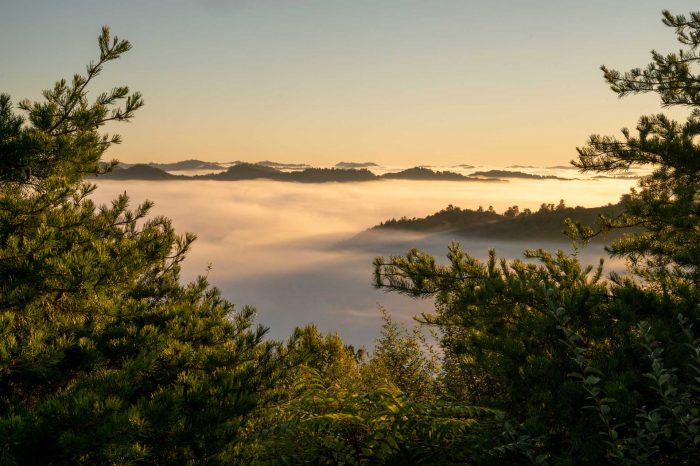Spring brings an increase of wildlife activity to West Virginia, and West Virginia state parks and forests are a great place to look for them. Keep an eye out for these critters as you trek through woods and fields:
The spring peeper chorus is often one of the first signs of spring. These diminutive tree frogs are about the size of the end of your thumb, but they make a big noise, according to Jim Phillips, retired naturalist from Pipestem Resort. Phillips also leads eagle surveys of the Pipestem area.
“They can be heard at a distance of a mile or more, even with your car windows rolled up. If you stand right next to a group of them it will make your ears ring,” he said.
Other amphibians to watch for include wood frogs, which come to vernal pools in early spring. The males make a sound like a duck or a clucking turkey and can be heard from half a mile away. American toads congregate in the same areas as peepers and wood frogs but may also be common around larger bodies of water. Their sound is described as a trill.
Phillips said he’s noticed that about the same time the peepers are getting active, many of the resident songbirds will begin singing, especially in the morning. Listen for the calls of the song sparrow, northern cardinal, chickadees, nuthatches and titmice.
One comical looking bird to watch for is the American woodcock, also known as a timberdoodle. These birds have a body about the size and shape of a softball, a head about the size of a golf ball and a bill that looks like a pencil. Active at dusk and dawn, they are noted for their courtship pattern, Phillips said.
“The male dances in front of the female while making a sound like ‘peent.’ After a bit of dancing and strutting, he takes to the air in widening circles until nearly out of sight. Then he drops back to the ground with chortling, chipping vocals and whistling of the air through his wings.”
Chief Logan State Park Naturalist Lauren Cole sees a lot of spring peepers and wood frogs this time of year. “Most of the early spring wildlife species are ‘cold blooded,’ so they will be taking advantage of sunny or warmer days,” she said.
Some of the most active spring wildlife are also the smallest. Look for the tiny spring azure butterfly, which has bright blue wings speckled with black. They lay eggs on flowering dogwood, where you might find them congregating.
Spring brings an increase in salamander activity, Cole said. The northern dusky salamander can be found in springs and small springs. They are variable in color and pattern, but they typically have a reddish-brown stripe down their back and a cream-colored speckled belly. Southern ravine salamanders are brown or black with gold or white flecks.
Spring also is an active time for the wolf spider. These are the largest species of spider in West Virginia, but they’re harmless. Wolf spiders carry their young on their backs, so a busy mother might be lugging around hundreds of little passengers.
Tygart Lake State Park Naturalist Jacob Jackson said his area experiences a lot of bird activity in the spring.
“One thing that I notice is increased woodpecker activity, even though many of them stay here year-round. I’ve noticed more red-headed woodpeckers and northern flickers getting a lot more active,” Jackson said.
“We also have red-tailed hawks and bald eagles sighted on the lake and environs throughout the year. As we get into May, I usually start to notice scarlet tanagers spotted around the park.”
Enhance your viewing experience
To get the most out of your viewing experience, carry binoculars and wildlife identification guides. You can order or download a guide from the West Virginia Division of Natural Resources. Watch the ground and bushes for the smallest species and learn to identify different wildlife calls. Join a guided hike to learn more about native plants and wildlife from an experienced naturalist.
Lastly, practice the core principles of “Leave No Trace”: Do not remove wildlife or plants from the park, and pack out anything you pack in.
Discover wildlife and more on your next state park adventure. Start planning your Almost Heaven getaway today!
Book Now